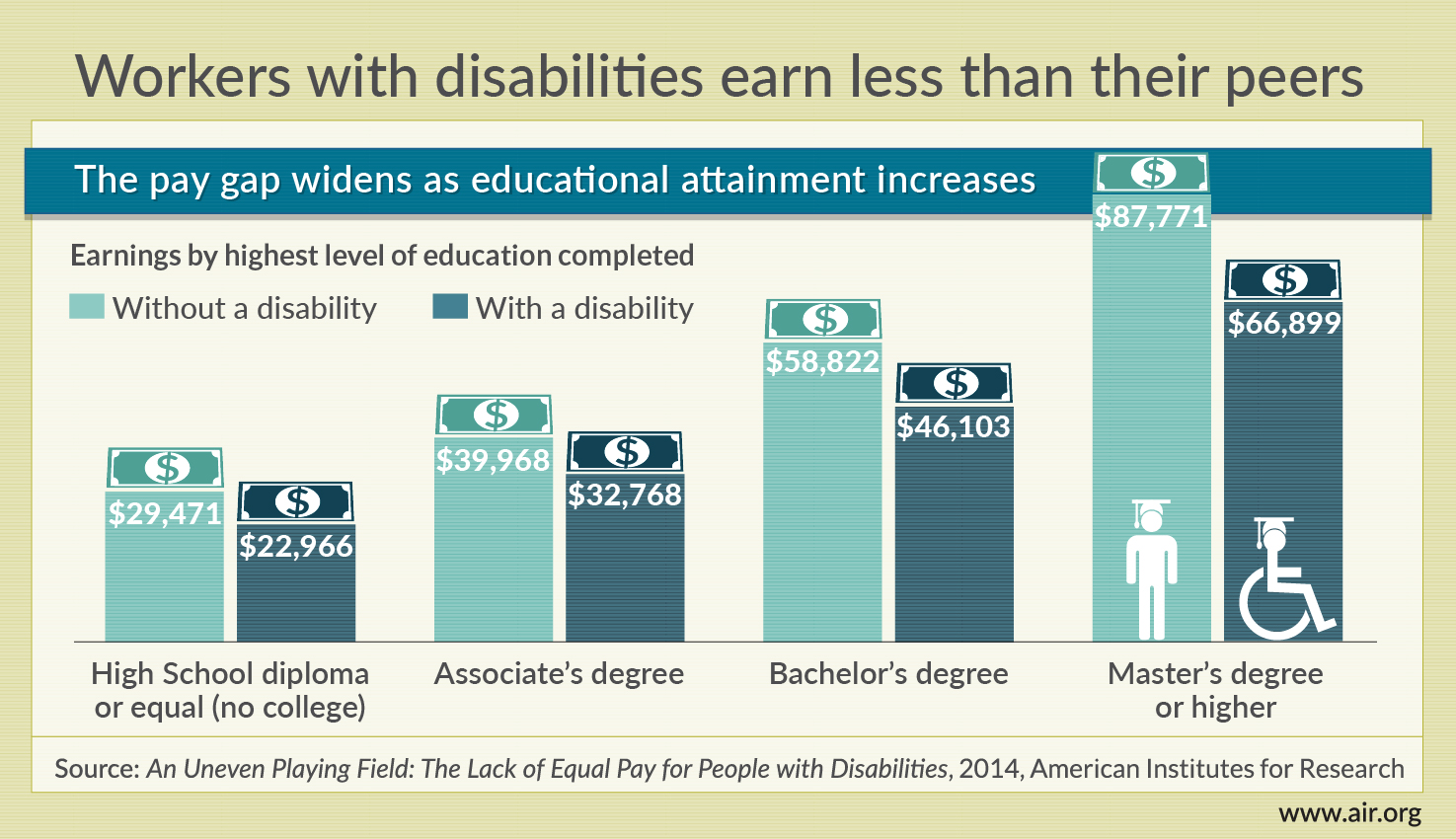An Uneven Playing Field: The Lack of Equal Pay for People With Disabilities
 For people with disabilities, does attaining educational success equal to that of their non-disabled peers ensure opportunities for financial independence and success? The existing disability literature compares earnings and income between people with disabilities and those without, examines employment rates among people with different types of disabilities, and identifies labor market outcomes for specific populations with disabilities (e.g., male heads of households and post-high school young adults).
For people with disabilities, does attaining educational success equal to that of their non-disabled peers ensure opportunities for financial independence and success? The existing disability literature compares earnings and income between people with disabilities and those without, examines employment rates among people with different types of disabilities, and identifies labor market outcomes for specific populations with disabilities (e.g., male heads of households and post-high school young adults).
However, the current research does not describe the income difference between people with disabilities and their non-disabled counterparts in full-time employment by educational level. Nor does it describe the subsequent economic impact on individuals, states, or the nation. To address this gap in research, our study focuses on two pertinent questions:
- Do earnings differ between these two groups after accounting for educational attainment and workforce participation?
- If so, how great is that discrepancy and what is its economic impact?
Key Findings
The answers to those questions are alarming. Despite educational attainment, earnings inequalities certainly exist between the two groups, and surprisingly the gap actually widens as educational attainment increases.
- The greatest earnings inequalities occur among those with a master’s degrees or higher.
- The U.S. economy would have received an additional $141 billion in 2011—roughly 1% of the gross domestic product—if people with disabilities were paid comparably to those without.
- The earnings difference from people with disabilities would have translated into another $25 billion in federal taxes and $6.5 billion in state taxes.

